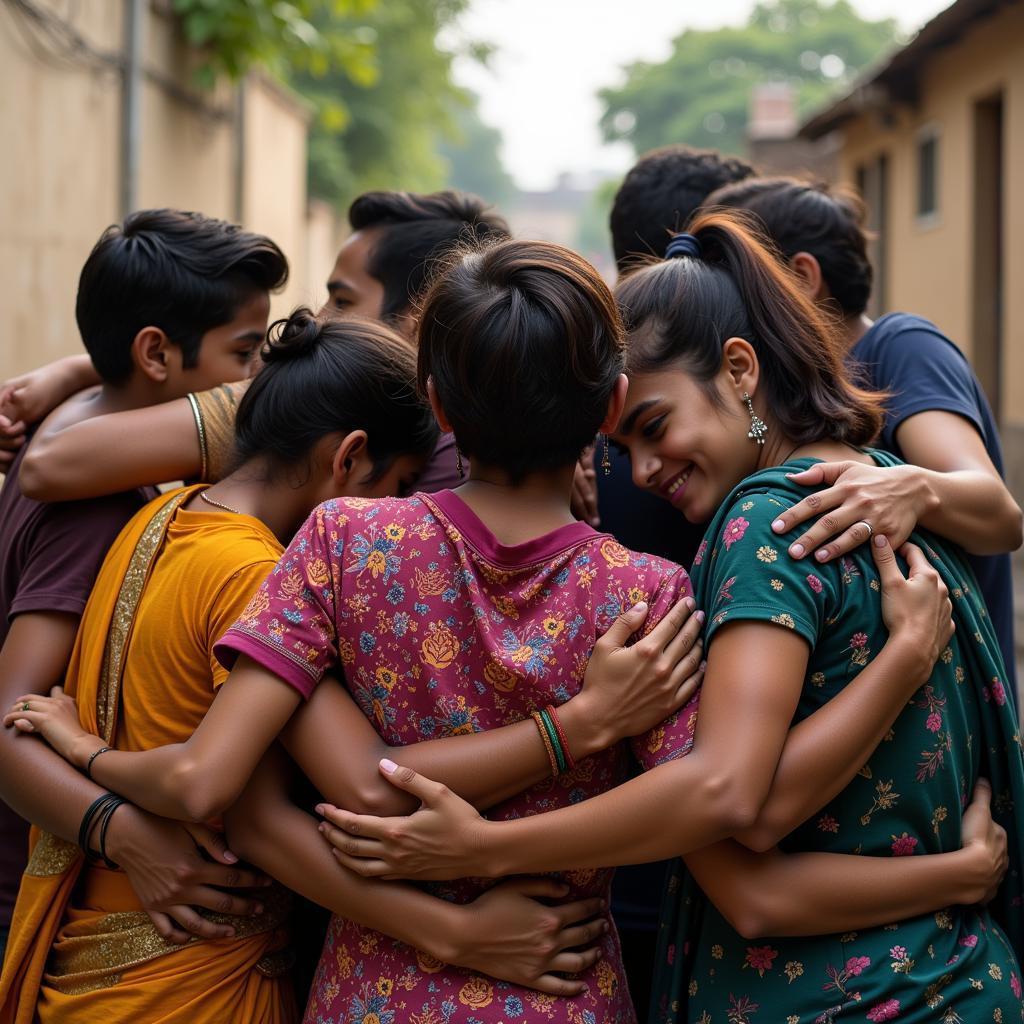Garibi Ki Shayari, the poetry of poverty, offers a poignant glimpse into the lives and struggles of those living in challenging circumstances. It’s a powerful medium for expressing the realities of poverty, from the lack of basic necessities to the emotional toll it takes. This exploration delves into the various themes and emotions conveyed through garibi ki shayari, examining its cultural significance and the impact it has on both the writer and the reader.
Understanding the Depth of Garibi Ki Shayari
Garibi ki shayari isn’t just about rhyming words; it’s about sharing lived experiences. It’s a cry for empathy, a way to voice the often-unheard stories of hardship and resilience. The poetry often uses metaphors and symbolism to depict the harsh realities of poverty, giving a voice to the voiceless and shining a light on the struggles they face.
- Emotional Resonance: Garibi ki shayari connects with readers on an emotional level, fostering empathy and understanding for the complexities of poverty.
- Social Commentary: It serves as a powerful form of social commentary, highlighting societal inequalities and prompting reflection on the systems that perpetuate poverty.
- Cultural Significance: Rooted in the cultural context of its origin, garibi ki shayari reflects the specific challenges faced by communities affected by poverty.
Themes and Emotions in Garibi Ki Shayari
The themes explored in garibi ki shayari are as diverse as the experiences of poverty itself. From the lack of food and shelter to the struggle for dignity and hope, the poetry delves into the multifaceted nature of living with limited resources. Common themes include:
- Struggle for Survival: The daily grind of making ends meet, the constant worry about basic necessities, and the relentless pursuit of survival are recurring themes.
- Loss of Dignity: The erosion of self-worth and the feeling of being marginalized are often explored, highlighting the psychological impact of poverty.
- Hope and Resilience: Despite the hardships, garibi ki shayari often expresses a flicker of hope, a testament to the resilience of the human spirit.
Exploring the Nuances of Poverty through Poetry
The use of metaphors and vivid imagery allows poets to paint a powerful picture of poverty. A simple phrase can evoke a complex range of emotions, from despair to determination. The poetry often uses symbolism to represent the struggles faced by those living in poverty, creating a deeper understanding of their experiences.
 Garibi Ki Shayari: Themes and Emotions
Garibi Ki Shayari: Themes and Emotions
The Power of Voice and Expression
Garibi ki shayari empowers individuals to share their stories and connect with others who have faced similar challenges. It creates a sense of community and solidarity, reminding us that we are not alone in our struggles. This form of poetry acts as a bridge, connecting the experiences of those living in poverty with those who may not fully understand their realities.
- Amplifying Marginalized Voices: It gives a platform to those whose voices are often unheard, allowing them to share their perspectives and challenge societal norms.
- Promoting Empathy and Understanding: By sharing personal experiences, garibi ki shayari fosters empathy and breaks down stereotypes surrounding poverty.
- Inspiring Social Change: The poetry can act as a catalyst for social change, raising awareness and inspiring action to address the root causes of poverty.
Conclusion: The Enduring Legacy of Garibi Ki Shayari
Garibi ki shayari serves as a powerful reminder of the human cost of poverty. It gives voice to the struggles, hopes, and resilience of those living in challenging circumstances. By exploring the themes and emotions conveyed through this unique form of poetry, we can gain a deeper understanding of the complexities of poverty and work towards a more just and equitable world. Let us continue to listen to these voices and be inspired to create positive change.
FAQ
- What is the significance of garibi ki shayari?
- What are some common themes explored in this type of poetry?
- How does garibi ki shayari empower marginalized communities?
- What is the impact of using metaphors and symbolism in this poetry?
- How can garibi ki shayari inspire social change?
- What are some examples of powerful garibi ki shayari?
- Where can I find more resources about this topic?
For further assistance, please contact us at Contact@ViperCircle.com or visit our office at G-5, लोअर परेल, सेनापति बापट मार्ग, मुंबई, महाराष्ट्र – 400013, भारत।. Our customer service team is available 24/7. You can also find more information on our website, including don dialogue in hindi.